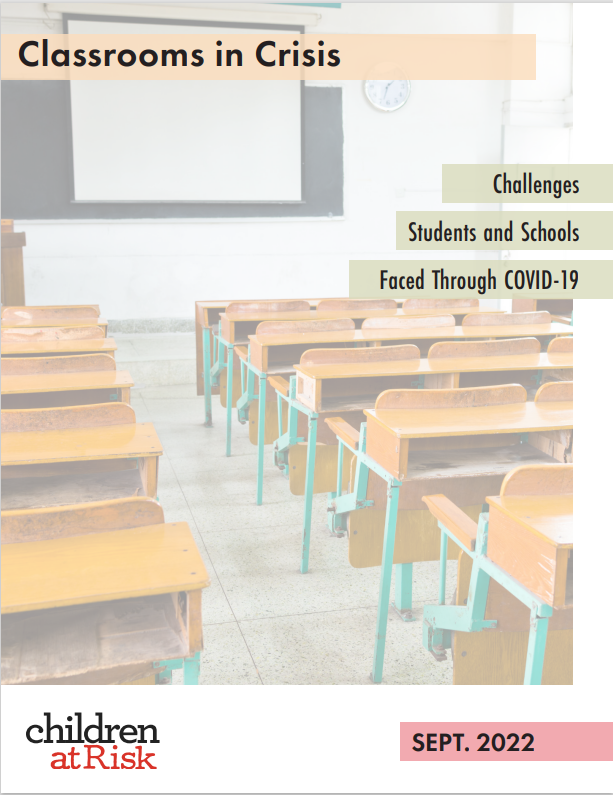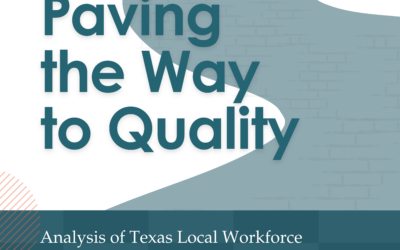COVID-19 changed our public education landscape nearly overnight. Thousands of Texas schools and nearly 5.5 million students faced a school year like never before. Schools had to quickly develop tools and
resources that would support the pivot to a virtual classroom and had to shift to educating children in crisis, learning a whole new suite of software and skills all while grappling with a worldwide health crisis that has
not been experienced in the last 100 years.
When it became clear that schools would need to close for an extended amount of time, school districts quickly worked to develop solutions to prevent long-term impact to education and support services. Few
people could predict the amount of time that these solutions would need to be in place and the impact that a multi-year pandemic would have on our education systems and the education and care of Texas children.
In this report, CHILDREN AT RISK examines the impact of the pandemic on Texas children using a whole child approach. What became very clear during the pandemic was that schools are not only centers for
academic learning for Texas children, but that they serve as community social safety nets for many families: providing access to nutrition, preventative health screenings, childcare and mental health support. This report reviews data across various indicators of academic success including test scores, food insecurity, mental health outcomes, and others. By looking at education, health and well-being and poverty trends through 2021, the report presents a landscape view of these factors, the disparities across various demographics, and recommendations for how to move forward from the exceptional circumstances we found ourselves in the past two years. It is not unexpected that there will be gaps in learning from the up to 2 years of remote and interrupted learning, however with an intentional strategy and the right resources, we can continue to support districts and students as we move forward and prepare for the future.
MORE LIKE THIS
Texas Child Care Honor Roll
Media Contacts: Morgan Gerri, 832.600.9354 Rashena Franklin 713.301.4577 Research shows that 90% of brain development occurs in the first five years of a child’s life. This period is foundational—what children learn, or don’t learn, during...
Access to High-Quality Child Care is Scarce 2025 Analysis: Texas Child Care Deserts
Access to High-Quality Child Care is Scarce April 25, 2025 | C@R Blog, Early Childhood Education, Research Written by Kim Kofron, Senior Director of Education, and Jenn Meier, Associate Director of the Center for Social Measurement &...
Charting Success
Charting Success Evaluating the Classroom Experiences of Children of Immigrants in TexasOur children are charting a new course for America. They are at the leading edge of the nation’s growing diversity. Approximately 53% of the U.S. population...
Textual Analysis of Local Workforce Board Strategic Plans:
Textual Analysis of Local Workforce Board Strategic Plans: Opportunity Youth & Young Adults Local Workforce Development Boards are crucial in developing regional workforces and supporting our local economies. Young people are the cornerstone of...
Legislative District Profiles | Opportunity Youth & Young Adults
Welcome to CHILDREN AT RISK's Opportunity Youth & Young Adults Policy Resource hub, where you can explore the economic and data landscape of each Texas House and Senate district.Texas’ youth have the power to drive a thriving economy and...
Paving the Way to Quality
In 2022, CHILDREN AT RISK unveiled The Quest for Equity and Quality, a groundbreaking report that highlighted significant disparities in child care providers' experiences with the Texas Rising Star (TRS) program across the state. Now, our latest...





